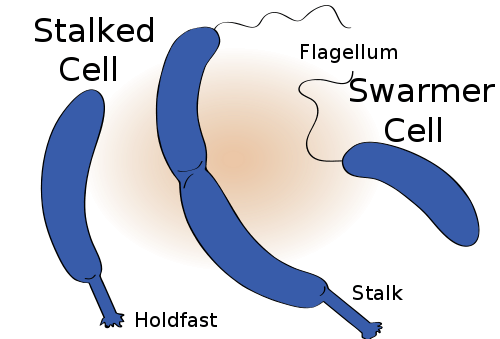In all the other 88%, errors can occur, but the bacterium will grow and reproduce * The question of what is needed for life is a fundamental question in biology, says one of the researchers

A team from the Stanford University School of Medicine has cataloged down to the single DNA signal level, which parts of the genetic code are essential for the survival of one species of bacteria - Caulobacter crescentus.
They discovered that 12% of the bacteria's genetic material is essential for survival in laboratory conditions. The essential components include not only protein-coding genes but also regulatory DNA, and surprisingly, other short DNA segments whose function is unknown. The remaining 88 percent of the genes can be disrupted without harming the bacteria's ability to grow and multiply.
The research, which was made possible thanks to the development of effective methods for genetic analysis, paves the way for a better understanding of how bacterial life developed and for improving the identification of the DNA components essential for the survival of pathogenic bacteria in an infected person. The article will be published in the August 30 issue of the journal Molecular Systems Biology.
"The work answers a basic question in biology: "What is essential for life" says Dr. Beat Christen, one of the editors of the article and a postdoctoral student in developmental biology at Stanford University. "We presented a method for identifying the parts of the genome that are essential for life," he said.
The bacterium studied is a non-pathogenic freshwater species that has been used for years in molecular biology experiments. Its full genome was already completed in 2001 but knowing what the letters in the genetic code are doesn't tell researchers which parts of the DNA are essential.
"We had many surprises in the analysis of the essential regions of the Colobacteria genome" says Dr. Lucy Shapiro, the editor-in-chief of the article. "For example, we found 91 essential DNA elements that we have no idea what they do. This may provide clues that will lead us to the discovery of unknown functions of the bacterium." Shapiro is a professor of developmental biology and director of the Beckman Center for Molecular and Genetic Medicine at Stanford.

3 תגובות
Yoel Moshe,
Note that they defined "essential for survival under laboratory conditions." In other words, they were looking for genes and other DNA segments that are essential under very specific conditions. Also to your question, what did they define as essential to life - damage to "the ability of the bacteria to grow and multiply."
I would also point out that this is not the first work on the subject, and what is not said in this article is that these works have beyond academic interest as well as enormous clinical importance because they reveal new targets for the development of antibiotics. After all, damage to everything that is essential to the bacteria will result in stopping its growth and curing it. In the above case, the research was done on a non-pathogenic bacteria, but the methods they developed can be applied to other bacteria.
It is interesting what was defined by the researchers as "essential for life". The bacteria as a primitive form of life respond easily and readily to processes of change and adaptation. As it is a higher system in evolution, it is more certain [specific] in its application and therefore less flexible to change. [In complex life the absolute majority of mutations are doomed to extinction because of incompatibility].
By way of analogy, let's say that the experiment can be done on humans and we will take care of the part responsible for the development of the brain. And let's say that a certain factor that is blocked causes the development of a normal fetus, but whose maximum mental skills are at the level of Down syndrome. Is it said that the same genetic component is "not essential for life"?
We've only just begun.